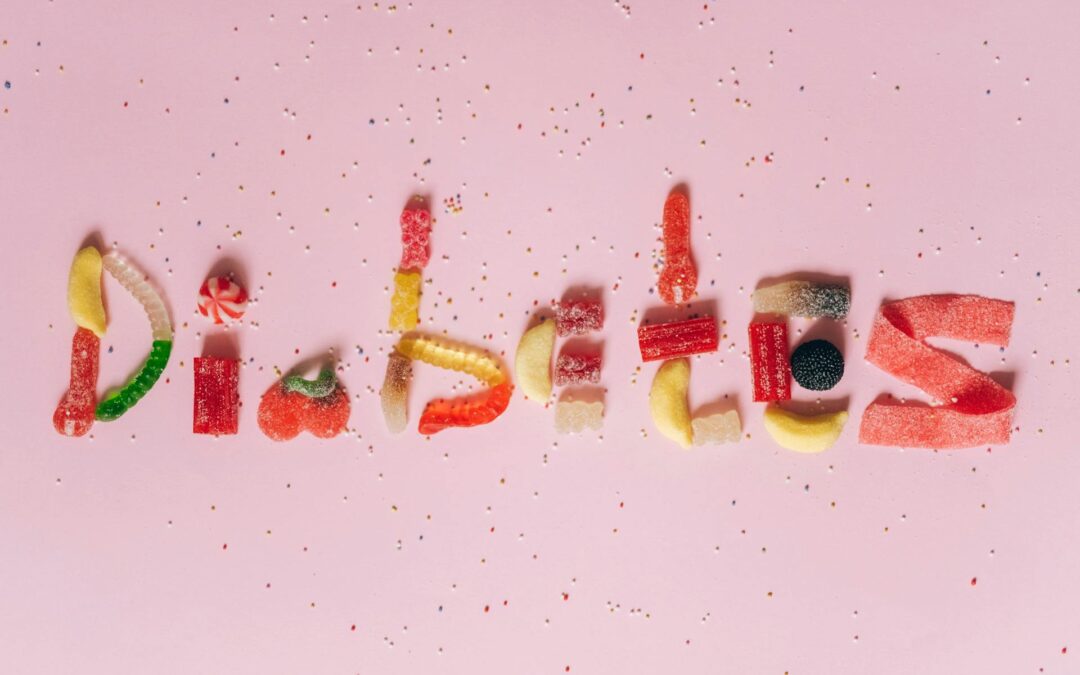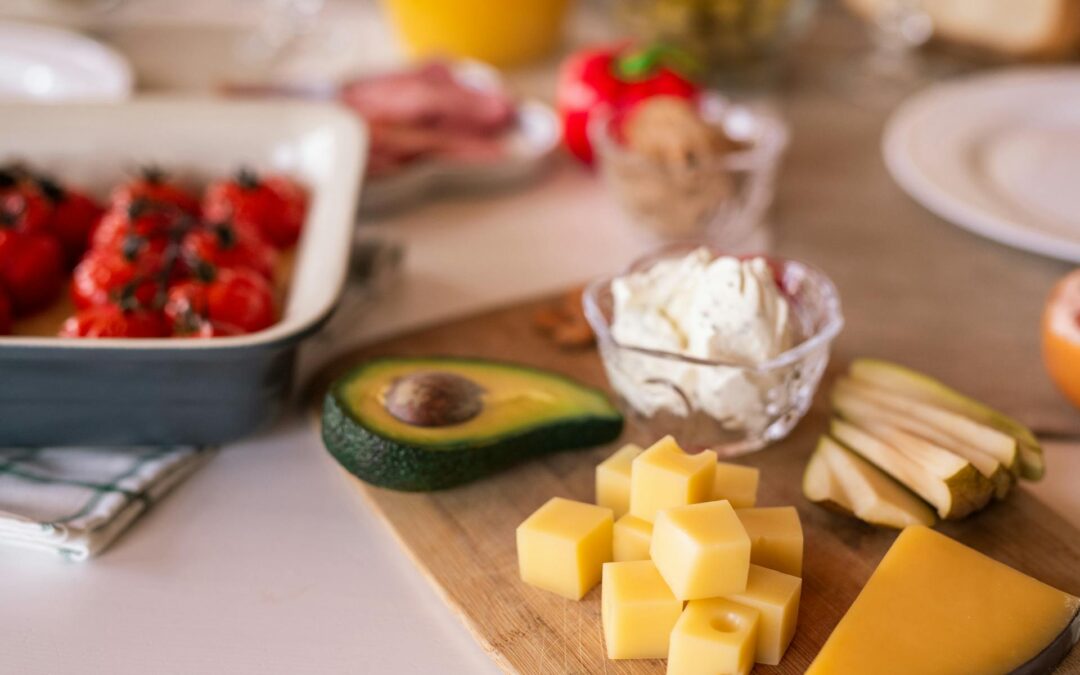The Low Carb High Fat (LCHF) Diet has gained popularity as a practical, satisfying approach to weight loss and metabolic health. With its emphasis on reducing carbohydrate intake and focusing on healthy fats, the LCHF diet offers a unique way to manage weight and support energy levels. In this guide, we’ll walk you through everything you need to know to understand, start, and thrive on the LCHF diet.
What is the Low Carb High Fat (LCHF) Diet?
The Low Carb High Fat (LCHF) Diet is a lifestyle approach focused on reducing carbohydrate intake and increasing fats while keeping protein moderate. Unlike many diets that emphasize cutting calories or restricting certain foods entirely, LCHF encourages a thoughtful shift in how the body gets energy—favoring fats over carbs. By choosing more healthy fats and fewer processed carbs, this diet aims to stabilize energy levels, reduce cravings, and support metabolic health. The approach appeals to people who want a straightforward way to support weight management, manage blood sugar, and enhance overall health without complicated rules. (1)
Key Concepts of the LCHF Diet
The heart of the LCHF diet lies in understanding how the body uses different macronutrients (carbohydrates, fats, and proteins) for fuel. Let’s break it down:
- Low Carbohydrate Intake: Carbohydrates are typically the body’s go-to source of energy. But with fewer carbs available, the body learns to rely on fats instead. This switch can lead to a metabolic state called ketosis, where the body produces ketones (derived from fat) as an alternative energy source.
- High Fat Consumption: Fats make up the majority of calories in the LCHF diet, including sources like avocados, olive oil, butter, and nuts. These fats help keep you satisfied and supply the energy your body needs when it’s not getting much from carbs.
- Moderate Protein Levels: Protein plays a vital role in building and repairing tissues. However, unlike some high-protein diets, LCHF advises a moderate protein intake. This helps prevent the body from converting excess protein into glucose, which could interrupt the fat-burning process.
The LCHF diet encourages its followers to stick to nutrient-dense, whole foods, making it a less processed, cleaner way of eating compared to standard diets.
Origins and Evolution of the LCHF Diet
The LCHF diet didn’t start as a weight-loss trend; it evolved from therapeutic uses. Decades ago, doctors prescribed low-carb, high-fat diets to manage conditions like epilepsy and type 2 diabetes. In particular, ketogenic diets have been used to reduce the frequency of seizures in individuals with epilepsy. Over time, researchers and nutrition experts found that the benefits of an LCHF approach could be extended to more people. The diet became popular among those looking to lose weight and manage chronic conditions like diabetes, thanks to its positive effects on insulin sensitivity and blood sugar control.
Today, the LCHF diet has inspired countless other eating plans, from the ketogenic diet to modified Atkins and paleo approaches. What sets LCHF apart, however, is its flexibility: while keto emphasizes extremely low carb intake to reach ketosis, LCHF gives followers the freedom to adjust their fat and carb intake according to personal goals and preferences.
Why Choose the LCHF Diet?
Many people gravitate toward the LCHF diet because it provides a straightforward way to address modern health concerns like weight gain, metabolic syndrome, and unstable blood sugar levels. Here’s why:
- Weight Loss Potential: By prioritizing fat over carbs, the LCHF diet encourages the body to use stored fat for energy, potentially leading to weight loss without severe calorie restriction.
- Steady Energy and Focus: High-carb diets often cause energy spikes and crashes, especially when meals are packed with refined carbs like bread, pasta, or sweets. With LCHF, your energy levels tend to be more consistent due to the steady release of energy from fats.
- Reduced Hunger and Cravings: Many people report feeling fuller for longer when they cut down on carbs and focus on fat and protein. This is partly due to stable blood sugar levels, which can help curb cravings.
- Metabolic Health Benefits: Research suggests that LCHF may support insulin sensitivity, lower blood sugar, and reduce triglycerides—factors that contribute to better heart health and reduced diabetes risk. (2)
How the LCHF Diet Differs from Other Low-Carb Diets
While the LCHF diet has a lot in common with low-carb diets like keto and Atkins, it’s less strict in its macronutrient guidelines. For example: (3)
- LCHF vs. Keto: The keto diet is very low in carbs (usually under 50 grams per day), high in fat, and low in protein. Its goal is to push the body into ketosis. LCHF, on the other hand, allows for a slightly higher carb intake and doesn’t require ketosis.
- LCHF vs. Atkins: Atkins has different phases, starting with extremely low carbs and gradually reintroducing them. LCHF is more flexible from the start, allowing followers to adjust their carb and fat intake based on individual needs.
- LCHF vs. Paleo: While both diets encourage whole foods and discourage processed foods, paleo emphasizes ancestral eating and avoids grains and legumes, whereas LCHF focuses more on macronutrient balance and can include a wider variety of foods.
Core Components of an LCHF Meal
In practice, a typical LCHF meal might look like this:
- Protein Source: A portion of protein such as grilled salmon, chicken thighs, or eggs.
- Healthy Fats: Generous amounts of olive oil for dressing, a handful of nuts, or half an avocado.
- Low-Carb Vegetables: Leafy greens, cruciferous veggies (broccoli, cauliflower), and other low-starch vegetables.
This balance ensures that each meal is satisfying and provides steady energy while keeping carbohydrates low.
The Low Carb High Fat (LCHF) Diet stands out for its simplicity, flexibility, and emphasis on high-quality, whole foods. By understanding its core principles and adjusting to your lifestyle, the LCHF diet can become a sustainable way to support health and wellness without complex rules or extreme restrictions. Whether you’re interested in shedding a few pounds, enhancing your energy, or improving your metabolic health, LCHF offers a flexible framework to help you achieve these goals.
How Does the LCHF Diet Work?
The Low Carb High Fat (LCHF) Diet works by changing the body’s preferred energy source from carbohydrates to fats. This shift affects metabolic processes, energy levels, and even hunger, giving people a new approach to maintaining a steady weight and enhancing health. The LCHF diet isn’t just about eating fewer carbs; it’s about retraining your body to use fats for fuel, a process that can bring many benefits.
Understanding the Body’s Energy Source
In a typical high-carb diet, the body converts carbohydrates into glucose, the primary energy source for most people. When you reduce carbs on the LCHF diet, your body has less glucose available, which prompts it to tap into fat stores for energy instead. This is where ketones come in. As carbs decrease, the liver begins to break down fats, creating ketones as an alternative fuel. This metabolic shift, known as ketosis, encourages fat-burning and can lead to weight loss and improved energy stability.
Key Steps in the Metabolic Shift on LCHF
- Lowered Glucose and Insulin Levels: When you eat fewer carbs, glucose levels in the blood decrease, and the pancreas releases less insulin. Since insulin is responsible for storing fat, reduced insulin can lead to more fat breakdowns, aiding in weight loss.
- Ketone Production and Fat Adaptation: With reduced glucose, the liver starts to produce ketones from fatty acids. The body then becomes more “fat-adapted,” meaning it efficiently uses fat and ketones for fuel, especially during activities like steady-state exercise or daily routines.
- Steady Energy and Appetite Control: The LCHF diet helps maintain stable blood sugar levels, reducing the “spikes” and “crashes” that come with high-carb diets. This stability often leads to fewer cravings and a more controlled appetite, as fat provides a steady release of energy.
Why Fat Becomes the Star
One of the core principles of the LCHF diet is relying on healthy fats like avocados, olive oil, and nuts. Unlike carbs, fats are slowly metabolized, offering a gradual and sustained source of energy. This slow metabolism not only prevents the energy dips common with carbs but also allows the body to remain in fat-burning mode. This adaptation period can take a few days to a few weeks, and during this time, the body becomes efficient at using dietary and stored fats for fuel, which supports long-lasting energy and reduces hunger. (4)
Hormonal Benefits and Appetite Regulation
A unique benefit of the LCHF diet is how it impacts hormones that control hunger. When you’re eating high amounts of fat with moderate protein, hormones like leptin (which signals fullness) and ghrelin (which signals hunger) work more efficiently. This hormone balance is one reason many people report feeling fuller for longer on an LCHF diet. By regulating these hormones naturally, the LCHF diet helps reduce calorie intake without strict portion control, making it easier to maintain over the long term.
The Role of Ketones in Brain Health
The brain is a high-energy organ, usually relying on glucose. However, ketones are also an effective fuel for the brain and may provide certain cognitive benefits. Many LCHF followers experience improved focus, mental clarity, and even memory retention. This is particularly useful for those with brain fog or concentration issues, as ketones provide a steady energy supply to the brain, avoiding the fluctuations that can happen with carbs.
Adaptation Period and “Keto Flu”
As the body shifts from carbs to fats for energy, some people experience an adaptation phase known as the “keto flu.” This isn’t an actual illness but rather a temporary reaction as your body adjusts. Symptoms can include:
- Fatigue
- Headaches
- Muscle cramps
- Mood swings
During this time, staying hydrated and increasing salt and mineral intake can help ease symptoms. This phase usually lasts just a few days to a week, after which the body adapts to fat-burning, and energy levels improve significantly.
Benefits of Being Fat-Adapted
Once the body is adapted to using fats and ketones for fuel, it becomes easier to maintain steady energy, reduce cravings, and manage weight effectively. Here are some ways being “fat-adapted” on the LCHF diet works for long-term health:
- Less Reliance on Frequent Meals: Fat adaptation supports longer stretches between meals without feeling hungry, allowing for more flexibility in meal timing.
- Improved Physical Performance: While high-intensity athletes might require some carbs, many endurance athletes find that a fat-adapted state supports sustained performance in sports like running, hiking, or cycling.
- Stable Mental Focus: With the steady supply of ketones, the brain avoids the crashes that often follow carb-heavy meals, leading to clearer, more stable cognitive performance.
The Low Carb High Fat (LCHF) Diet essentially works by encouraging the body to burn fats instead of carbs, which can lead to a range of benefits from weight management to enhanced focus. By maintaining a low-carb intake and emphasizing quality fats, you can make the most of this diet’s metabolic advantages. Whether you’re new to low-carb or looking to improve your health and energy, understanding how the LCHF diet works gives you a strong foundation for success.
Benefits of the LCHF Diet
The Low Carb High Fat (LCHF) Diet offers a range of potential benefits, making it appealing to those seeking not only weight loss but also improvements in overall health, energy, and even mental clarity. The diet’s unique approach—favoring fats as a primary fuel source and reducing carbs—can yield positive effects in multiple areas. Let’s take a closer look at the main benefits of the LCHF diet and why it’s become a popular lifestyle choice.
1. Effective Weight Loss and Fat Reduction
One of the most sought-after benefits of the LCHF diet is its potential for weight loss and body fat reduction. Here’s why it works:
- Fat as Primary Fuel: By reducing carbs, the body switches to burning fat as its main energy source. This can mean using both dietary fats and stored body fat, which may lead to a reduction in body fat over time.
- Stable Blood Sugar and Reduced Cravings: The LCHF diet helps stabilize blood sugar levels, avoiding the insulin spikes and crashes that often lead to cravings and overeating. With fewer carbs, people tend to feel more in control of their appetite.
- Increased Satiety: Fats and proteins are more filling than carbs, which can lead to reduced calorie intake overall, even without strict portion control.
2. Improved Metabolic Health
The LCHF diet supports metabolic health by positively impacting blood sugar, insulin sensitivity, and lipid levels. Here’s how it works:
- Better Blood Sugar Control: Lowering carb intake helps manage blood sugar levels more effectively, which can be especially beneficial for people with type 2 diabetes or insulin resistance. (5)
- Enhanced Insulin Sensitivity: The reduction in carbs can help lower insulin levels and improve how the body responds to insulin, making it easier to maintain steady energy levels.
- Reduced Triglycerides and Improved Cholesterol: Many followers see a reduction in triglycerides (a type of fat in the blood), as well as an increase in HDL (good) cholesterol. These changes can support heart health and reduce the risk of cardiovascular issues.
3. Stable Energy Levels and Fewer Crashes
Unlike carb-heavy diets that can cause rapid energy spikes and dips, the LCHF diet promotes more stable energy throughout the day:
- Long-Lasting Fuel: Because fats are slowly metabolized, they provide a steady source of energy, reducing the highs and lows often experienced with carb-heavy meals.
- Consistent Focus and Mental Clarity: Many LCHF followers report improved focus and mental clarity. Ketones—produced when the body breaks down fats—are an efficient fuel for the brain, and many people find they can concentrate better without the brain fog that follows a carb-heavy meal.
- Reduced Dependency on Frequent Snacks: With more stable energy from fats, people often feel fuller for longer, reducing the need for constant snacks to stay energized.
4. Appetite Control and Reduced Cravings
The LCHF diet naturally regulates hunger hormones, leading to a more controlled appetite and fewer cravings:
- Leptin and Ghrelin Balance: By focusing on fats and proteins, the LCHF diet helps stabilize levels of leptin (which signals fullness) and ghrelin (which signals hunger). This balance can make it easier to stick to meal plans without feeling deprived.
- Reduced Sugar Cravings: By limiting sugars and processed carbs, the diet often decreases cravings for sweet, high-carb foods. This is particularly helpful for those who struggle with sugar addiction or blood sugar imbalances.
5. Potential Cardiovascular Benefits
When done correctly, the LCHF diet may contribute to heart health, particularly by reducing some cardiovascular risk factors:
- Increased HDL (“Good”) Cholesterol: Many followers see a rise in HDL cholesterol, which helps remove bad cholesterol from the bloodstream.
- Lowered Blood Pressure: Some studies suggest that low-carb diets, including LCHF, may help lower blood pressure, which can reduce the risk of heart disease.
- Decreased Inflammation: High-carb diets, particularly those high in processed carbs and sugars, can contribute to chronic inflammation. Reducing these foods in favor of whole, unprocessed fats may decrease inflammation, supporting better heart health.
6. Enhanced Mental Clarity and Cognitive Function
The brain can use ketones (produced when fat is broken down) as an energy source, and for many, this translates to mental benefits:
- Improved Focus and Concentration: Unlike carbs, which cause blood sugar swings, ketones provide a steady fuel source for the brain, promoting clear, consistent mental energy.
- Memory Support: Some research suggests that ketones may support brain function and could be beneficial in reducing cognitive decline, though more studies are needed in this area.
- Reduced Brain Fog: Many followers report that they experience fewer cognitive “slumps” throughout the day, likely due to the stable energy provided by fats.
7. Potential Benefits for Athletes and Physical Performance
While high-intensity athletes may need some carbs for fuel, many endurance athletes and active individuals report success with LCHF:
- Steady Energy for Endurance Sports: Endurance athletes, like marathon runners and cyclists, often benefit from the sustained energy provided by fat stores, which can support longer workouts without the need for frequent carb replenishment.
- Reduced Muscle Fatigue: By using fat as a primary fuel source, many athletes experience less muscle fatigue and fewer glycogen “bonks” (crashes in energy) during prolonged exercise.
- Faster Recovery Times: Some athletes report faster recovery times on LCHF, possibly due to reduced inflammation and improved fat adaptation.
8. Flexibility and Ease of Maintenance
One of the appealing aspects of the LCHF diet is its flexibility. Unlike strict diets that require meticulous tracking, the LCHF diet allows for adjustments based on individual goals:
- Adjustable Carb Levels: Followers can modify their carb intake depending on activity level, goals, and preferences. Unlike the ketogenic diet, which requires strict carb limits, LCHF offers a more relaxed approach.
- Sustainable Lifestyle: Many people find the LCHF diet easy to maintain over the long term. Since it’s focused on whole, satisfying foods, the diet is less likely to lead to burnout or cravings associated with highly restrictive diets.
The Low Carb High Fat (LCHF) Diet offers a range of benefits, from weight loss and improved metabolism to enhanced mental focus and consistent energy. For people seeking a balanced, flexible approach to health that focuses on whole foods and sustainable changes, the LCHF diet provides a straightforward path to achieving these goals. Whether you’re looking to lose weight, stabilize blood sugar, or improve your overall vitality, the LCHF diet can be a valuable tool in your wellness journey.
Potential Risks and Side Effects of LCHF
Though the LCHF diet is widely used, it’s essential to consider potential risks, especially if it’s long-term.
Short-Term Side Effects (Keto Flu, Fatigue, Cramping)
Many experience the “keto flu” when first starting, with symptoms like fatigue, cramping, and headaches as the body adapts to fewer carbs. Staying hydrated and replenishing electrolytes can ease this adjustment period.
Long-Term Risks and Considerations
There’s some debate over long-term effects, such as potential nutrient deficiencies (especially if vegetables are limited) and cholesterol increases. Working with a healthcare provider can help manage these risks.
Who Should Avoid the LCHF Diet?
While the LCHF diet may benefit many, it’s not ideal for everyone. Pregnant women, people with kidney disease, and those with certain metabolic disorders should consult a doctor before starting.
How to Start the LCHF Diet
Starting the Low Carb High Fat (LCHF) Diet can seem daunting, but with a bit of preparation and the right approach, you’ll quickly discover how satisfying and manageable it can be. The key is understanding which foods to prioritize, how to balance your meals, and what changes to expect as your body adapts to a lower-carb, high-fat lifestyle. Below, we’ve outlined practical steps to help you ease into the LCHF diet smoothly and successfully.
Understand Your Daily Macronutrient Goals
Before diving into the LCHF diet, it’s helpful to have a basic understanding of macronutrients—carbohydrates, fats, and proteins—and how they’re balanced in this approach. Generally, the LCHF diet follows these guidelines:
- Low Carbohydrates: Around 5-20% of your daily calories should come from carbs. This can range from 20 to 100 grams of carbs daily, depending on your specific goals and starting point.
- High Fat: Fats make up the bulk of your calories, usually 60-75%, with sources like avocado, olive oil, nuts, and fatty fish.
- Moderate Protein: Protein intake is around 20-25% of daily calories, focusing on quality sources like eggs, meat, and fish.
Tracking these macronutrients initially can be helpful. Many use apps to track their food intake, but after a while, you’ll likely become comfortable estimating portions and macronutrient ratios.
Plan Your LCHF-Friendly Meals
Planning meals that fit the LCHF structure is essential for staying on track and keeping your diet balanced. Here’s a breakdown of what an LCHF-friendly meal typically includes:
- Protein: Chicken, beef, fish, pork, eggs, or plant-based proteins like tofu (if you’re vegetarian).
- Healthy Fats: Include avocados, olive oil, butter, coconut oil, or nuts and seeds in each meal.
- Low-Carb Vegetables: Opt for leafy greens, zucchini, bell peppers, broccoli, and other non-starchy vegetables.
A sample LCHF meal might look like this: Grilled salmon with a side of sautéed spinach (cooked in olive oil) and a small avocado. The fats provide satiety, the protein helps with tissue repair, and the veggies add fiber and essential vitamins.
Stock Up on Essential Foods for the LCHF Diet
Starting the LCHF diet is easier when your pantry is stocked with the right ingredients. Here are some essentials to include in your grocery list:
- Healthy Fats: Olive oil, avocado oil, butter, coconut oil
- Protein Sources: Eggs, chicken, beef, salmon, tofu, and full-fat dairy like cheese or Greek yogurt
- Low-Carb Vegetables: Spinach, kale, zucchini, cauliflower, broccoli, bell peppers, and mushrooms
- Nuts and Seeds: Almonds, walnuts, chia seeds, flaxseeds, and pumpkin seeds
- Low-Carb Fruits: Berries (such as raspberries, and blackberries), which are lower in sugar than most other fruits
Focusing on whole, unprocessed foods is key to reaping the benefits of the LCHF diet. Whenever possible, avoid foods with added sugars and processed carbs, as they can hinder your progress.
Create a Sample Weekly Meal Plan
Mapping out a weekly meal plan can keep you motivated and on track. Here’s an example to get you started:
- Breakfast: Scrambled eggs with spinach, topped with avocado
- Lunch: Salad with mixed greens, grilled chicken, olives, cucumbers, and olive oil dressing
- Dinner: Grilled steak with steamed broccoli and a side of cauliflower mash
- Snacks: Nuts, a small serving of cheese, or a few cucumber slices with guacamole
Batch cooking or prepping ingredients in advance can make it easier to follow your meal plan throughout the week.
Hydrate and Replenish Electrolytes
As you reduce carbs, your body sheds excess water and electrolytes, which can lead to temporary side effects often called the “keto flu.” Symptoms can include fatigue, headache, muscle cramps, and irritability. Staying hydrated and replenishing electrolytes can minimize these symptoms.
- Drink Plenty of Water: Aim for at least eight glasses a day to support hydration.
- Replenish Electrolytes: Include foods rich in potassium (such as avocados), magnesium (like spinach and nuts), and sodium. Some people add a pinch of salt to their water or drink bone broth to maintain electrolyte balance.
Prepare for an Adaptation Phase
Switching from carbs to fats as your primary energy source can take time. During this adaptation phase, you might feel lower energy or experience cravings as your body adjusts. Here’s what to expect:
- Initial Cravings: You may crave carbs initially, but these cravings usually diminish after the first week as your body becomes more fat-adapted.
- Decreased Performance in Intense Workouts: Some people feel a temporary decrease in endurance during intense workouts. As your body adapts, your performance should return to normal.
- Improved Satiety and Energy: After the initial adaptation, many people experience stable energy levels and less hunger throughout the day.
This phase can last from a few days to two weeks, depending on the individual. Patience is essential, as the long-term benefits often outweigh any temporary discomfort.
Track Your Progress and Adjust as Needed
Once you’ve established a routine, tracking your progress can help ensure you’re getting the most out of the LCHF diet. Here are a few ways to monitor your success:
- Body Measurements and Weight: Keep a record of body measurements and weight over time to monitor fat loss.
- Energy and Mood Levels: Note any changes in your energy and mood. Many people report more stable energy and less irritability on the LCHF diet.
- Blood Sugar Levels: If you have diabetes or insulin resistance, you might consider tracking blood sugar levels. Many find that the LCHF diet improves their blood sugar control.
If you notice that progress slows or you’re not feeling your best, consider adjusting your carb intake, ensuring you’re getting enough fat, or experimenting with meal timing.
Set Realistic Goals and Be Patient
The LCHF diet can lead to significant improvements, but everyone’s journey is different. Some see results in a few weeks, while others may take longer to notice changes. Setting realistic goals and being consistent with your dietary choices will help you stay motivated.
Additionally, remember that the LCHF diet is a long-term approach rather than a quick fix. By focusing on a sustainable routine and regularly evaluating your progress, you’ll be more likely to enjoy and maintain the benefits of this way of eating.
Foods to Eat on the LCHF Diet
When following the Low Carb High Fat (LCHF) Diet, choosing the right foods is essential to ensure you get the nutrients, energy, and satisfaction needed to maintain this lifestyle. The LCHF diet focuses on whole, unprocessed foods that are low in carbohydrates but rich in healthy fats and moderate in protein. This balanced approach fuels your body effectively, reduces cravings, and supports overall well-being.
Below is a breakdown of the best foods to include on an LCHF diet, along with their benefits and ideas for incorporating them into your meals.
1. Healthy Fats
Since fats are the main source of energy in the LCHF diet, it’s important to choose quality sources that provide both flavor and nutrition. Opt for natural, unprocessed fats whenever possible.
Recommended Healthy Fats:
- Avocado: High in monounsaturated fats and packed with fiber, potassium, and vitamins.
- Olive Oil: Known for its heart-healthy benefits, olive oil is rich in antioxidants and anti-inflammatory properties.
- Butter and Ghee: Preferably from grass-fed cows, these are great for cooking at higher temperatures.
- Coconut Oil: A source of medium-chain triglycerides (MCTs), which are easy for the body to use for energy.
- Nuts and Seeds: Almonds, walnuts, chia seeds, and flaxseeds provide healthy fats, fiber, and essential minerals.
Incorporation Tips:
- Drizzle olive oil on salads and roasted vegetables.
- Add a spoonful of coconut oil or ghee to your cooking.
- Snack on a handful of nuts or sprinkle seeds on top of Greek yogurt or salads.
2. Low-Carb Vegetables
Vegetables are an important part of the LCHF diet, providing fiber, vitamins, and minerals without the high carb count. Most leafy greens and cruciferous vegetables are low in carbs and can be included generously in your meals.
Best Low-Carb Vegetables:
- Leafy Greens: Spinach, kale, arugula, and Swiss chard are nutrient-dense and very low in carbs.
- Cruciferous Vegetables: Broccoli, cauliflower, Brussels sprouts, and cabbage are filling and versatile.
- Other Low-Carb Veggies: Zucchini, bell peppers, asparagus, and cucumbers add color and flavor to meals.
Incorporation Tips:
- Sauté leafy greens in olive oil for a quick, nutrient-packed side.
- Use cauliflower rice or zoodles (zucchini noodles) as low-carb alternatives to rice or pasta.
- Include a large salad with mixed greens, cucumbers, and bell peppers as part of lunch or dinner.
3. Protein Sources
While the LCHF diet isn’t a high-protein diet, it’s essential to consume moderate amounts of quality protein to support muscle health and satiety. Choose proteins that are minimally processed and, if possible, from pasture-raised or grass-fed sources for better quality and flavor.
Top Protein Choices:
- Eggs: High in protein and packed with nutrients, eggs are versatile and affordable.
- Meat: Beef, pork, and lamb provide rich sources of protein and fats. Opt for grass-fed or organic options when possible.
- Poultry: Chicken and turkey are lean protein sources; choose darker cuts (like thighs) to increase the fat content.
- Fish and Seafood: Salmon, sardines, trout, and other fatty fish are high in omega-3 fatty acids, which support heart and brain health.
- Full-Fat Dairy: Cheese, Greek yogurt, and cottage cheese offer a good balance of protein and fat.
Incorporation Tips:
- Make omelets or frittatas with eggs, cheese, and leafy greens for breakfast.
- Grill or bake fish with herbs and a side of roasted vegetables for dinner.
- Enjoy a serving of full-fat Greek yogurt topped with nuts and seeds as a snack.
4. Full-fat dairy and Dairy Alternatives
Full-fat dairy can be a valuable part of the LCHF diet, providing both fat and protein. Look for unsweetened, high-quality dairy products to avoid hidden sugars and carbs.
Recommended Dairy Options:
- Cheese: A satisfying snack or addition to salads and dishes; hard cheeses like cheddar, gouda, and Parmesan are lower in carbs.
- Greek Yogurt: Choose full-fat, plain Greek yogurt for the best balance of carbs and protein.
- Cream and Butter: These are nearly carb-free and ideal for adding richness to coffee, sauces, or cooking.
Dairy Alternatives: For those who are lactose-intolerant or prefer non-dairy options, unsweetened almond milk, coconut milk, or nut-based yogurts can be good substitutes.
Incorporation Tips:
- Add cheese to your omelets or salads for extra flavor.
- Enjoy Greek yogurt with a few berries and a sprinkle of chia seeds.
- Use full-fat cream to make rich sauces for meats and vegetables.
5. Nuts and Seeds
Nuts and seeds are nutrient-dense, providing fats, protein, and fiber in one bite. They’re easy to carry as snacks, add texture to meals, and contain essential minerals like magnesium and zinc.
Best Nuts and Seeds for LCHF:
- Almonds: High in healthy fats and fiber, almonds are filling and versatile.
- Walnuts: Rich in omega-3 fatty acids, walnuts are ideal for heart health.
- Chia and Flaxseeds: Both are high in fiber and contain omega-3s, making them great for digestion and satiety.
- Pumpkin Seeds: These are rich in magnesium and add crunch to salads and soups.
Incorporation Tips:
- Sprinkle seeds on Greek yogurt, or salads, or stir them into smoothies.
- Use almond or coconut flour, made from finely ground almonds or coconuts, as a low-carb flour substitute for baking.
- Snack on a small handful of nuts for a quick energy boost.
6. Low-Carb Fruits (in Moderation)
While most fruits are higher in carbs, certain low-sugar fruits can be enjoyed on the LCHF diet in moderation. Berries, in particular, are packed with antioxidants and are lower in sugar compared to other fruits.
Best Low-Carb Fruits:
- Berries: Raspberries, strawberries, blackberries, and blueberries can be enjoyed in small portions.
- Avocado: Technically a fruit, avocado is low in carbs and high in healthy fats.
- Coconut: Coconut meat is low in carbs and adds texture to dishes.
Incorporation Tips:
- Add a few berries to your yogurt or a small handful to a salad for a hint of sweetness.
- Make a simple dessert by blending coconut cream with a few berries.
- Slice an avocado onto a salad or mash it with lemon juice and sea salt as a topping.
7. Beverages for the LCHF Diet
Staying hydrated is crucial in the LCHF diet, especially as the initial stages may lead to water loss. Fortunately, there are many LCHF-friendly beverage options to keep you hydrated and satisfied.
Best Beverages:
- Water: Essential for hydration; consider adding a pinch of salt if you’re losing electrolytes.
- Herbal Teas: Chamomile, peppermint, and other herbal teas are naturally calorie-free and provide variety.
- Coffee and Tea: Enjoy these plain or with a splash of full-fat cream. Bulletproof coffee (coffee blended with butter or MCT oil) is popular on LCHF for an added fat boost.
- Bone Broth: High in minerals, bone broth can replenish electrolytes and be enjoyed as a warm, savory drink.
By focusing on these nutrient-dense, low-carb, high-fat foods, you can create satisfying meals that keep you energized and aligned with your LCHF goals. Incorporating a variety of healthy fats, proteins, low-carb vegetables, and occasional low-sugar fruits will help you stay nourished, reduce cravings, and enjoy the many benefits of the LCHF diet. As you get more comfortable with the diet, experimenting with different recipes and food combinations can help keep your meals enjoyable and exciting.
Foods to Avoid on the LCHF Diet
Knowing what to avoid is just as crucial as knowing what to eat.
High-Carb Foods
Stay clear of high-carb foods like:
- Bread
- Pasta
- Rice
Sugary Foods and Drinks
Refined sugars can throw off blood sugar levels and halt fat burning.
Processed and Packaged Foods
Many processed items contain hidden carbs and unhealthy fats, making them less suitable for the LCHF lifestyle.
Common Mistakes to Avoid on the LCHF Diet
Even with the best intentions, some common mistakes can hinder your progress on the LCHF diet.
Not Eating Enough Fats
If you don’t consume enough fat, you might feel hungry and low on energy. Remember, fats are your primary energy source on LCHF.
Overeating Protein
Excessive protein can lead to gluconeogenesis, where protein converts to glucose, potentially hindering fat burning.
Ignoring Micronutrient Intake
LCHF followers sometimes overlook essential nutrients. Consider supplementing or adding low-carb vegetables rich in vitamins and minerals.
LCHF and Exercise: How They Work Together
Combining the Low Carb High Fat (LCHF) Diet with exercise can be highly effective for boosting energy levels, enhancing endurance, and supporting weight loss or muscle maintenance. However, because the LCHF diet shifts the body’s primary energy source from carbohydrates to fats, the way your body responds to different types of exercise may also change. Knowing how to adjust your workouts and what to expect from an LCHF diet during exercise can help you make the most of both your diet and fitness goals.
Understanding Fat as Fuel for Exercise
The LCHF diet encourages the body to become fat-adapted, meaning it learns to burn fats as its main fuel source rather than carbs. This adaptation can provide stable, long-lasting energy during lower-intensity exercises, as fat stores are more abundant in the body than glycogen (the storage form of carbs). For many people, this results in:
- Improved Endurance: Fat provides a steady fuel supply that can support longer, sustained activities, making the LCHF diet particularly compatible with endurance sports like hiking, cycling, and long-distance running.
- Fewer “Energy Crashes”: With fat as fuel, you’re less likely to experience the energy spikes and crashes common with high-carb diets, especially during activities that require steady, moderate effort.
Ideal Types of Exercise for the LCHF Diet
The LCHF diet can be well-suited for certain types of physical activity, particularly those that rely on steady, lower-intensity energy rather than quick, high-intensity bursts. Here’s a breakdown of exercises that generally work well with an LCHF approach:
- Low-Intensity Aerobic Exercise: Activities like brisk walking, light jogging, and steady cycling work well with the LCHF diet since the body can rely on fat as a primary energy source.
- Endurance Training: Long-distance sports, such as marathon running, hiking, and swimming, can benefit from the steady energy provided by fat. Many endurance athletes adapt well to LCHF, finding that they can complete longer distances without needing constant refueling.
- Strength Training: Although strength training relies somewhat on glycogen, many LCHF followers find that lifting weights or bodyweight exercises are manageable on the diet, especially if they focus on moderate, steady efforts rather than explosive movements.
While the LCHF diet can support these types of exercise, it may take a few weeks for the body to adjust to using fats for fuel, especially if you’re accustomed to high-carb diets.
Adjusting for High-Intensity Workouts
High-intensity activities, like sprinting, HIIT (High-Intensity Interval Training), or competitive sports, rely heavily on glycogen, which is more readily available on a higher-carb diet. While you can still perform these activities on LCHF, your performance might feel different, especially at first. Here are some tips to support high-intensity exercise on LCHF:
- Targeted Carbohydrate Intake: Some people choose to incorporate a small amount of carbs before high-intensity workouts to provide quick fuel. Known as targeted ketogenic dieting or carb cycling, this approach allows for better performance while maintaining fat adaptation.
- Use MCT Oil or Exogenous Ketones: Medium-chain triglycerides (MCTs) provide quick energy and can help maintain endurance. Exogenous ketones are another option that some athletes use to enhance energy levels during high-intensity workouts.
- Listen to Your Body: You may find that your high-intensity performance improves after a few weeks on LCHF as the body becomes more fat-adapted. If you’re feeling low on energy, consider adjusting the intensity or timing of your workouts.
Managing the Adaptation Phase
If you’re new to the LCHF diet, you might experience an adaptation period where workouts feel harder, especially during high-intensity exercise. Known as the keto flu, this phase can include fatigue, cramping, and reduced endurance as your body adjusts to fat burning. Here’s how to manage it:
- Stay Hydrated and Replenish Electrolytes: When starting LCHF, the body releases more water and sodium, which can lead to dehydration and muscle cramps. Drink plenty of water and consider adding a pinch of salt or drinking electrolyte-enhanced water.
- Lower Exercise Intensity Temporarily: In the first couple of weeks, consider reducing the intensity of your workouts to avoid over-taxing your body while it adapts to fat burning.
- Gradually Increase Workout Intensity: Once your body has adapted (typically within two to four weeks), you’ll likely notice improved stamina and endurance. At this point, gradually ramp up your workout intensity as needed.
Benefits of Exercise on the LCHF Diet
Once you’ve adjusted, there are unique benefits to combining the LCHF diet with regular exercise. Here’s what many people experience:
- Steady Energy for Endurance: Since fat provides a long-lasting energy source, many endurance athletes report they can go longer without needing to refuel frequently. This can be beneficial for long workouts or outdoor activities.
- Reduced Inflammation: High-carb diets, especially those high in processed sugars, can contribute to inflammation, which affects recovery and muscle soreness. The LCHF diet emphasizes healthy fats, which may reduce inflammation and help speed up recovery post-exercise.
- Better Body Composition: Many people find that LCHF combined with exercise promotes a leaner body composition, reducing body fat and supporting muscle retention. The diet’s protein and fat content keeps you feeling full and satisfied, which may help prevent overeating.
Tips for Maximizing Exercise Performance on the LCHF Diet
For those who want to optimize their workouts on LCHF, these tips can help boost performance and recovery:
- Time Your Meals Around Workouts: Eat a meal with fats and moderate protein 1-2 hours before exercise to provide lasting energy. After workouts, refuel with a protein-rich meal to support muscle recovery.
- Use Supplements Wisely: Some LCHF exercisers find that adding supplements, like magnesium (to prevent cramps) or omega-3s (for inflammation), can help maintain performance and recovery.
- Experiment with Carb Timing: If you’re struggling with high-intensity workouts, try introducing a small carb snack (such as a few berries) about 30 minutes before exercise. Monitor how this affects your energy and performance.
7. LCHF for Endurance vs. Strength Training
Different forms of exercise may require specific adjustments to the LCHF diet:
- Endurance Training: For long, sustained activities, fat serves as a powerful fuel source. As you get further into your endurance workouts, the body will rely on fat stores, which can help you maintain energy for hours without the need for high-carb fuel.
- Strength Training and Muscle Building: Some LCHF followers worry about muscle loss, but moderate protein intake can support muscle health. If muscle gain is a priority, focus on high-quality protein sources (like eggs, fish, and chicken) and consider targeted carb intake if necessary.
In summary, the Low Carb High Fat (LCHF) Diet can complement a wide range of exercises, especially those requiring steady, long-lasting energy. By adjusting your workout intensity, focusing on fat-adapted activities, and listening to your body’s needs, you can successfully balance LCHF with a fulfilling exercise routine. Whether you’re aiming to enhance endurance, build strength, or maintain overall fitness, the LCHF diet offers a unique approach to fueling your body for optimal performance.
Tracking Progress and Adjusting the LCHF Diet
Tracking your progress on the Low Carb High Fat (LCHF) Diet is key to understanding what works best for your body and ensuring that you’re reaching your health and wellness goals. Regularly monitoring certain metrics, evaluating how you feel, and making small adjustments as needed can make all the difference in creating a sustainable, effective LCHF lifestyle. Below are some essential ways to track your progress and helpful strategies for tweaking the diet to meet your evolving needs.
Key Metrics to Monitor on the LCHF Diet
Tracking specific metrics helps you measure tangible changes, giving you a clear sense of your progress. Here are a few main indicators to keep an eye on:
- Body Weight and Measurements: While weight isn’t everything, it can be useful to track for those aiming to lose or maintain weight. Consider weighing yourself weekly or taking measurements around your waist, hips, arms, and legs to track inches lost, which may be a more accurate reflection of fat loss.
- Body Fat Percentage: Tracking body fat percentage, as opposed to only weight, gives a more complete picture of your progress, particularly if you’re working out or building muscle. Many gyms offer body composition analysis, or you can invest in a body fat scale for at-home measurements.
- Energy and Mood Levels: Many LCHF followers notice improved energy and mental clarity. Keeping a daily journal to track how energized and focused you feel can provide valuable insight into how well the diet is working for you.
- Blood Sugar Levels: For those with blood sugar concerns or type 2 diabetes, regularly tracking blood sugar levels (particularly fasting glucose and post-meal readings) can show how the LCHF diet is helping you manage these metrics. Many find that the LCHF diet improves insulin sensitivity and stabilizes blood sugar levels over time.
- Ketone Levels: If your goal is to maintain ketosis, you may choose to monitor your ketone levels. You can track this using urine strips, a blood ketone meter, or a breath analyzer. Although it’s not essential for everyone on LCHF, some people find this helpful for ensuring they’re staying in a fat-burning mode.
Pay Attention to How You Feel Physically and Mentally
While metrics are useful, paying attention to subjective experiences can also help. Here are some areas to consider:
- Hunger and Cravings: One of the benefits of LCHF is appetite control. If you notice that you’re consistently hungry or having intense cravings, you may need to adjust your fat or protein intake to keep you fuller for longer.
- Sleep Quality: Diet changes can impact sleep. Many people on LCHF report improved sleep, but if you’re experiencing sleep disruptions, it could be worth examining your meal timing or caffeine intake.
- Exercise Performance: Notice how your workouts feel. If you’re struggling with energy during high-intensity activities, you may need to adjust carb intake around workouts or add more fat for steady energy.
Adjusting Macros Based on Your Goals
Your specific goals, whether they’re focused on weight loss, muscle gain, or overall wellness, may require slight adjustments to your macronutrient intake:
- For Weight Loss: If you’re not seeing the desired results, you may need to slightly reduce calories or monitor carb intake more closely. Adding more non-starchy vegetables and moderating fat intake can help keep you feeling full while staying within your calorie goals.
- For Muscle Gain: If building muscle is a goal, consider increasing protein slightly while maintaining enough fat to stay in a fat-adapted state. Some people add a small amount of carbs post-workout to support recovery and muscle growth, known as “targeted carbs.”
- For Maintenance: Once you’ve reached your goal, your focus may shift to maintaining it. You may add a bit more variety in carbs, like low-carb fruits or extra vegetables, while keeping protein and fat steady. The key is to find a balance that keeps you feeling good and energized.
Adjusting Based on Physical Activity Levels
As your activity levels change, your diet may need adjustments to support your body effectively:
- Active Days: On days with higher physical activity, especially intense exercise, some people add a few extra carbs (such as a handful of berries or a small sweet potato) around the workout. This approach can support performance without interrupting fat burning.
- Rest Days: On less active days, you might choose to reduce carbs slightly, prioritizing fats and protein to keep your body in a fat-burning state.
Dealing with Plateaus
Sometimes progress can slow down or “plateau,” which is common in any long-term lifestyle change. Here are some adjustments you can try:
- Reevaluate Carbohydrate Intake: If carbs have gradually crept back into your diet, reducing them again may help break through a plateau and encourage fat burning.
- Try Intermittent Fasting: Some people on LCHF incorporate intermittent fasting to encourage fat-burning by limiting their eating window each day. This method can support weight loss and improve insulin sensitivity when done mindfully.
- Switch Up Exercise Routines: Changing your workout routine by adding weight training, interval training, or new forms of cardio can help stimulate muscle growth and breakthrough weight-loss plateaus.
Regular Check-Ins for Long-Term Sustainability
The LCHF diet is best approached as a lifestyle rather than a quick fix, which means it’s essential to check in with yourself regularly to make sure it’s still meeting your needs. Set aside time each month to evaluate:
- Overall Health and Happiness: Is the LCHF diet helping you feel healthier and happier overall? This is a key indicator of long-term success.
- Flexibility with Social Situations: Being adaptable to your diet can make it more sustainable. If you’re feeling restricted, try adding small amounts of higher-carb, whole foods (like additional veggies or a serving of fruit) to give yourself flexibility while staying low-carb overall.
- Adjusting to Life Changes: Major life changes, like new work schedules, fitness goals, or family routines, may mean you need to adjust your approach. Be open to experimenting and finding new ways to make LCHF work for you in various stages of life.
Seek Support and Stay Informed
Dietary changes can be challenging to navigate alone. Seek out support from online communities, friends, or family members who may also be following the LCHF lifestyle. Engaging with others who share similar goals can provide encouragement, fresh ideas, and accountability. Additionally, staying informed about new research on low-carb diets and nutrition science can help you make educated decisions and fine-tune your approach over time.
Tracking your progress on the Low Carb High Fat (LCHF) Diet and making periodic adjustments are essential for keeping your results aligned with your goals. By regularly monitoring key metrics, paying attention to how you feel, and adapting to new life situations, you can create a personalized LCHF routine that evolves with you. This adaptable approach helps make the LCHF diet not only effective but also sustainable and enjoyable in the long run.
Success Stories and Testimonials of the LCHF Diet
The Low Carb High Fat (LCHF) Diet has gained popularity for its ability to help people achieve a wide range of health goals—from weight loss and increased energy to improved blood sugar control and mental clarity. Many people who have tried the LCHF diet report transformative changes, and their testimonials can offer insight and motivation for those considering this lifestyle change. Below are some inspiring success stories and testimonials from individuals who have seen remarkable results with the LCHF diet.
Real-Life Weight Loss Success
One of the most common reasons people turn to the LCHF diet is for weight loss, and many have achieved impressive results:

Sarah’s Story: Sarah, a 38-year-old mother of two, struggled with weight loss for years despite trying several popular diets. After transitioning to the LCHF diet, she lost 40 pounds over eight months. “With LCHF, I felt fuller for longer, and the constant cravings disappeared,” she shares. “I’m eating foods I enjoy and losing weight steadily.”

Mike’s Journey: Mike, a 52-year-old businessman, initially started LCHF to lose weight and support his health. Within a year, he lost 60 pounds. “The biggest change was how sustainable it felt,” Mike explains. “I didn’t feel deprived, and the weight loss was steady and natural.”
These success stories demonstrate the diet’s ability to support weight loss without extreme restrictions, helping people shed pounds through improved satiety and consistent fat burning.
Enhanced Energy and Mental Clarity
Many people find that the LCHF diet provides a stable source of energy throughout the day, reducing the “highs and lows” of carb-heavy meals. Increased mental clarity is another common benefit, with followers reporting improved focus and reduced brain fog.

Rachel’s Transformation: Rachel, a college student who juggles academics and part-time work, found herself frequently exhausted and unfocused. After switching to LCHF, she felt a noticeable change in her energy levels. “I’m not constantly reaching for coffee or sugary snacks anymore,” Rachel says. “My mind feels clearer, and I’m more productive.”

John’s Newfound Focus: John, a 45-year-old software engineer, started LCHF to manage his energy better during long work hours. “The steady energy on LCHF has been amazing,” he shares. “I’m able to focus on tasks without that afternoon slump, and I feel sharper mentally than I have in years.”
These testimonials highlight how the LCHF diet’s steady energy supply from fats can provide a more reliable fuel source, enhancing both physical stamina and cognitive performance.
Improved Blood Sugar and Diabetes Management
The LCHF diet has shown promise for people managing blood sugar issues and conditions like type 2 diabetes. By reducing carbohydrate intake, many individuals see improvements in blood sugar control, which can reduce the need for medication and lower the risk of complications.

Laura’s Health Journey: Diagnosed with type 2 diabetes at age 50, Laura was eager to avoid long-term medication. After adopting the LCHF diet and working closely with her doctor, Laura saw her blood sugar levels drop within three months. “I feel empowered,” Laura says. “My blood sugar is stable, and my doctor has reduced my medication.”

Carlos’ Results: Carlos, 60, struggled with prediabetes and high blood sugar levels for years. After trying the LCHF diet, his fasting blood sugar levels returned to a healthy range. “I feel in control of my health now,” he shares. “The diet made it easier to avoid spikes and dips in my blood sugar.”
These stories reflect the potential of the LCHF diet to support metabolic health, offering people with blood sugar concerns a powerful dietary tool to help manage their condition.
Reduced Inflammation and Joint Pain
Many followers of the LCHF diet report reduced inflammation, which can alleviate joint pain and improve physical comfort. Lower-carb, anti-inflammatory foods help many LCHF adherents experience relief from conditions exacerbated by inflammation.

Angela’s Relief: Angela, who dealt with chronic joint pain, found noticeable relief within a few weeks of starting LCHF. “I used to wake up stiff and sore,” she explains. “Switching to low-carb, healthy fats has made a huge difference—I feel younger and more mobile.”

David’s Freedom from Inflammation: David, a former athlete, struggled with arthritis and inflammation after years of intense training. “LCHF has helped me feel better in my body,” he shares. “My joints ache less, and I feel more agile.”
These stories underscore how the LCHF diet, with its focus on anti-inflammatory fats and fewer processed carbs, can reduce inflammation and support long-term joint health.
Success Stories for Endurance and Athletic Performance
Some athletes find that the LCHF diet enhances their endurance, helping them fuel long workouts or events without frequent refueling. Endurance athletes, in particular, report that relying on fat for fuel provides sustained energy, allowing for longer performance with fewer dips in energy.

Emma’s Marathon Experience: Emma, a long-distance runner, found that the LCHF diet allowed her to run longer distances without “hitting the wall.” “Training felt smoother,” Emma explains. “I no longer rely on carb gels every few miles; my body feels steady and strong on longer runs.”

Mark’s Cycling Success: Mark, an avid cyclist, was able to complete his longest ride yet after switching to LCHF. “The diet changed my stamina completely,” he says. “I’m not crashing during my rides, and I recover more quickly.”
These athletic success stories illustrate how the LCHF diet supports endurance by allowing the body to access fat stores for energy, which can benefit athletes in sports that demand long, sustained effort.
Testimonials of Sustainable Lifestyle Changes
One reason the LCHF diet has gained such a following is its sustainability. Many people find it easier to stick with LCHF long-term compared to restrictive diets because it doesn’t require excessive calorie counting or depriving themselves of satisfying foods.

Jessica’s Sustainable Transformation: Jessica initially started LCHF to lose weight but has since adopted it as a lifestyle. “I’ve been on LCHF for three years now, and I can’t imagine going back,” she shares. “I enjoy the food, and it feels sustainable.”

Liam’s Experience: Liam, who struggled with yo-yo dieting, found the LCHF diet to be the only approach he could maintain long-term. “It feels natural, not like a diet,” he explains. “I’m not constantly thinking about food, and I’m enjoying what I eat.”
These testimonials highlight the sustainability of LCHF, as many people find it easier to maintain due to its emphasis on whole foods, satisfying meals, and flexibility.
The Low Carb High Fat (LCHF) Diet has made a difference in the lives of countless individuals, from those seeking weight loss and steady energy to people managing chronic health conditions. These success stories and testimonials demonstrate the transformative potential of the LCHF diet and how it can be adapted to fit diverse lifestyles and goals. For anyone curious about the benefits of LCHF, these stories offer a powerful reminder that with commitment and consistency, real and lasting changes are possible.
Frequently Asked Questions (FAQs)
Can I follow the LCHF diet if I have diabetes?
Yes, but consult your doctor to ensure it’s safe for your condition.
Is the LCHF diet safe for long-term use?
Yes, though regular check-ups are recommended to monitor health markers.
How much weight can I expect to lose on the LCHF diet?
Weight loss varies; consistent adherence is key to seeing results.
Can I eat dairy on the LCHF diet?
Yes, but focus on high-fat, low-carb dairy options like cheese and heavy cream.
How does the LCHF diet differ from the ketogenic diet?
LCHF is more flexible than keto and doesn’t require a strict state of ketosis.
The Bottom Line
In summary, the Low Carb High Fat (LCHF) Diet is a versatile approach for those seeking to reduce weight, improve energy levels, and support metabolic health. With the right knowledge, foods, and lifestyle adjustments, the LCHF diet can be an effective, sustainable choice for many people.







0 Comments